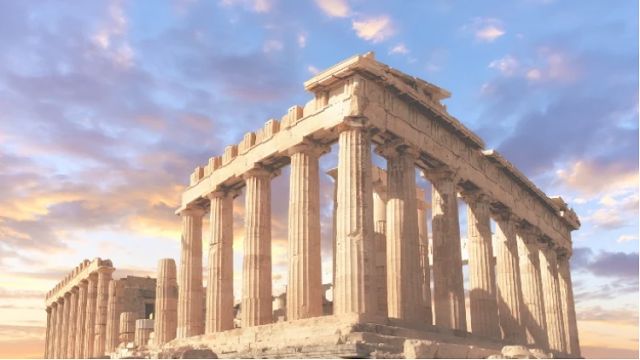Overview of the Island
Imagine a crescent-shaped island perched on the edge of a collapsed volcanic caldera, where whitewashed buildings with cobalt domes tumble down steep cliffs into a turquoise sea. That’s Santorini—one of the most iconic Greek islands and a bucket-list destination for travelers from around the globe. Nestled in the southern Aegean Sea, this jewel of the Cyclades archipelago isn’t just famous for its Instagram-worthy views. Santorini has a magnetic charm born from its unique geography, dramatic sunsets, and rich cultural tapestry.
Santorini is relatively small, roughly 76 square kilometers in area, but don’t let that fool you. This island is packed with diversity—steep cliffs, volcanic beaches, vineyards, ancient ruins, lively towns, and tranquil villages. The island’s main towns, such as Fira and Oia, offer a blend of traditional Cycladic architecture, luxury hotels, charming boutiques, and buzzing nightlife. Yet, just a short drive away, you'll find quiet hamlets like Megalochori and Pyrgos where time seems to stand still.
Whether you're an adventure seeker, a history buff, or someone just looking to bask in the Greek sun, Santorini caters to every kind of traveler. The island’s infrastructure is also well-developed, making it easy to explore, whether by rented ATV, car, or local bus. In short, Santorini isn’t just a place—it’s an experience, one that awakens the senses and stays in your memory long after you've left its shores.
What Makes Santorini Unique?
Santorini stands apart from other Mediterranean islands for several reasons. First, there's the volcano. The island was formed from one of the most violent eruptions in recorded history, which occurred around 1600 BC. This catastrophic event shaped the island's dramatic topography and may even be the origin of the legend of Atlantis. The result is a landscape unlike any other: steep caldera cliffs, submerged craters, and multicolored volcanic beaches.
Then, there’s the architecture. The Cycladic buildings—brilliant white with blue domes—are both practical and picturesque. Built to reflect the harsh sun and withstand earthquakes, they also happen to be incredibly photogenic. Walk through the narrow alleys of Oia or Fira, and you’ll feel like you’re inside a postcard.
Another unique aspect is the wine. Due to its volcanic soil, Santorini produces some of the most distinctive wines in Greece, especially Assyrtiko. These wines have a mineral-rich flavor profile you won't find anywhere else. Pair that with sun-ripened cherry tomatoes, fresh seafood, and fava bean purée, and you’re in for a culinary treat.
Lastly, Santorini is a place of contrasts. You can go from exploring ancient Minoan ruins to sipping cocktails in an infinity pool within the same hour. The island manages to blend the ancient with the modern, the raw with the refined, and the peaceful with the lively—all with effortless charm.
The History and Mythology of Santorini
Volcanic Origins
Santorini’s fascinating geological past is not just textbook material—it’s the very foundation of the island’s mystique. Known in ancient times as Thera, the island was once a single round landmass. Then came the cataclysmic Minoan eruption, around 1600 BC. This eruption, one of the most powerful in recorded history, blew the center out of the island, forming a massive caldera that eventually filled with seawater.
What’s left today are several islands: Thera (the main island), Thirasia, Aspronisi, and the two volcanic islets in the center—Nea Kameni and Palea Kameni. These volcanic remnants still breathe; you can hike Nea Kameni and witness the smoldering craters and sulfur vents firsthand.
The eruption didn’t just shape the geography—it shaped history. The ash and pumice buried the nearby Minoan city of Akrotiri, preserving it like a Greek Pompeii. Some scholars believe the disaster contributed to the decline of the Minoan civilization and may even have inspired Plato’s tale of Atlantis. It’s this blend of science and legend that makes Santorini’s past so compelling.
Legends and Myths Associated with Santorini
Santorini isn’t just steeped in ash—it’s steeped in myth. One of the most enduring legends tied to the island is that of Atlantis, the lost city described by Plato. Some researchers argue that the sudden destruction of Santorini and the advanced Minoan settlement of Akrotiri may have inspired the myth. After all, Atlantis was said to have sunk into the sea in a single day and night—a fate that eerily echoes the volcanic eruption here.
In Greek mythology, Santorini was also believed to be born from a miracle. According to legend, the Argonaut Euphemus dreamed he made love to a nymph and threw a clod of earth into the sea. From that earth emerged the island of Calliste, later known as Thera and now Santorini. This story highlights the island’s magical and almost divine nature in ancient Greek belief.
These legends add another layer of intrigue to Santorini. It’s not just a destination—it’s a storybook setting where myths still echo through the cliffs and ruins. Whether or not you believe in lost cities or divine creation, there’s no denying the almost supernatural beauty of this island.
Getting to Santorini
Flights and Ferries
Reaching Santorini is surprisingly convenient for a remote island. You can get there either by air or sea. Santorini International Airport (JTR) receives daily flights from Athens, Thessaloniki, and during the tourist season, direct flights from major European cities like London, Paris, Rome, and Amsterdam. The flight from Athens takes about 45 minutes, making it a quick hop if you're already in Greece.
For those who prefer a scenic route, ferries are a popular alternative. High-speed ferries from Athens’ port of Piraeus take about 4.5 to 6 hours to reach Santorini, depending on the vessel. There are also regular connections to other Cycladic islands like Mykonos, Naxos, and Paros, making island-hopping a breeze.
Each method has its perks. Flights are faster, but ferries offer stunning views and a more immersive travel experience. If you’re planning a longer trip through the Greek isles, the ferry is a quintessential part of that adventure.
Best Time to Visit
Timing your trip to Santorini can greatly influence your experience. The peak tourist season runs from June to August, when the island is buzzing with energy, beach clubs are in full swing, and sunsets are met with applause. However, it’s also the most crowded and expensive time to visit.
If you prefer a more relaxed vibe, aim for the shoulder seasons—April to early June or September to early November. The weather is still warm, the sea is swimmable, and the crowds are thinner. Plus, you'll get better deals on accommodations and tours.
Winter (December to February) sees fewer tourists and cooler temperatures, but many hotels and restaurants shut down. Still, it’s a great time for those seeking solitude and a different side of Santorini—quiet villages, moody seascapes, and local charm.
Are there seasonal events at these historical landmarks?
1. Akrotiri Archaeological Site & Village
-
Feast of Panagia (“Assumption of the Virgin Mary”) — August 15
Celebrated at Panagia churches in Akrotiri, featuring an evening church service, followed by village feasts with live music and traditional dancing -
Osfagia de Fegarou (Feast of the Winds) — Last week of August (Pyrgos, near Akrotiri)
A vibrant festival filled with local music, dances, folklore reenactments, and Cretan-inspired cuisine—rooted in ancient Dionysian traditions -
Ifestia (Volcano) Festival — Late August
Near the caldera by Fira/Akrotiri, featuring a spectacular reenactment of the Minoan eruption with fireworks, light shows, music, and pyrotechnics
2. Panagia Episkopi (Mesa Gonia)
-
Feast of the Assumption — August 15
Centered around the 11th-century Byzantine church, featuring a solemn religious ceremony, procession of icons, and communal sharing of traditional bean and pea purée -
Other Patron Saint Feasts — Various dates
Throughout the year, local festivals celebrate church namedays with food, wine, religious services, music, and dancing—e.g., in June, September, October across Santorini villages
Megaro Gyzi Museum (Fira)
-
Megaro Gyzi Cultural Festival — August
Month-long cultural celebration including classical concerts, art exhibitions, and theatrical performances within the elegant mansion's courtyard
4. Fira & Venues (Historical Architectural Sites)
-
Santorini International Music Festival — August – September
Classical music concerts featuring local and international orchestras, held in historic venues across Fira Santorini Jazz Festival — July Jazz performances in scenic outdoor settings, including beachside venues—often near Kamari .
5. Ancient Thera (Mesa Vouno)
-
While there are no specific festivals at the archaeological site itself, the broader Easter celebrations (Good Friday candlelit processions in Pyrgos/Vothonas), Feast Days (e.g., Agios Efstathios on September 20), and village panigyria often take place in nearby settlements—especially in Pyrgos and Vothonas
6. Emporio & Vothonas (Castle & Vineyards)
-
Wine & Harvest Festivals — Late August / Mid‑September
Held at the Wine Museum or vineyards, these events include grape stomping, tastings of local Assyrtiko wines, live music, dancing, and celebrations of the grape harvest -
Patron Saint Feasts — Various dates (e.g., Agios Efstathios on September 20 in Kontohori/Vothonas)
Include church services, folk dances, and communal feasts
.
Volcano Islets (Nea & Palea Kameni)
-
Although no formal festivals occur on the islets, they feature in the storyline of the Ifestia Festival’s fireworks and eruption reenactment over the caldera
8. Easter (Good Friday & Holy Week)
-
Good Friday Procession — March–April (movable date)
Spectacular candlelit evening processions occur in Pyrgos and other villages, with elaborately decorated epitaphs carried through streets. Locals and tourists alike gather to observe this moving ritual
















0 Comments